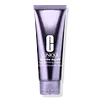What's inside
What's inside
 Key Ingredients
Key Ingredients

 Benefits
Benefits

 Concerns
Concerns

No concerns
 Ingredients Side-by-side
Ingredients Side-by-side

Water
Skin ConditioningMyristic Acid
CleansingGlycerin
HumectantSodium Methyl Cocoyl Taurate
CleansingPotassium Hydroxide
BufferingLauric Acid
CleansingBehenic Acid
CleansingPPG-24-Glycereth-24
EmulsifyingSodium Hyaluronate
HumectantSodium Acetylated Hyaluronate
HumectantButylene Glycol
HumectantCaprylyl Glycol
EmollientGlycol Distearate
EmollientPolyquaternium-7
Hexylene Glycol
EmulsifyingTetrasodium EDTA
Phenoxyethanol
PreservativeSodium Benzoate
MaskingCI 60730
Cosmetic ColorantWater, Myristic Acid, Glycerin, Sodium Methyl Cocoyl Taurate, Potassium Hydroxide, Lauric Acid, Behenic Acid, PPG-24-Glycereth-24, Sodium Hyaluronate, Sodium Acetylated Hyaluronate, Butylene Glycol, Caprylyl Glycol, Glycol Distearate, Polyquaternium-7, Hexylene Glycol, Tetrasodium EDTA, Phenoxyethanol, Sodium Benzoate, CI 60730
 Reviews
Reviews

Ingredients Explained
These ingredients are found in both products.
Ingredients higher up in an ingredient list are typically present in a larger amount.
Caprylyl Glycol is a humectant and emollient, meaning it attracts and preserves moisture.
It is a common ingredient in many products, especially those designed to hydrate skin. The primary benefits are retaining moisture, skin softening, and promoting a healthy skin barrier.
Though Caprylyl Glycol is an alcohol derived from fatty acids, it is not the kind that can dry out skin.
This ingredient is also used as a preservative to extend the life of products. It has slight antimicrobial properties.
Learn more about Caprylyl GlycolGlycerin is already naturally found in your skin. It helps moisturize and protect your skin.
A study from 2016 found glycerin to be more effective as a humectant than AHAs and hyaluronic acid.
As a humectant, it helps the skin stay hydrated by pulling moisture to your skin. The low molecular weight of glycerin allows it to pull moisture into the deeper layers of your skin.
Hydrated skin improves your skin barrier; Your skin barrier helps protect against irritants and bacteria.
Glycerin has also been found to have antimicrobial and antiviral properties. Due to these properties, glycerin is often used in wound and burn treatments.
In cosmetics, glycerin is usually derived from plants such as soybean or palm. However, it can also be sourced from animals, such as tallow or animal fat.
This ingredient is organic, colorless, odorless, and non-toxic.
Glycerin is the name for this ingredient in American English. British English uses Glycerol/Glycerine.
Learn more about GlycerinThis gentle cleansing and foaming ingredient is known for leaving a smooth feeling in skin and hair. It is made using coconut oil.
According to the manufacturer, it is soluble in water and has resistance to hard water, acid, and alkali.
Due to its coconut base, it may not be Malassezia folliculitis safe.
Learn more about Sodium Methyl Cocoyl TaurateWater. It's the most common cosmetic ingredient of all. You'll usually see it at the top of ingredient lists, meaning that it makes up the largest part of the product.
So why is it so popular? Water most often acts as a solvent - this means that it helps dissolve other ingredients into the formulation.
You'll also recognize water as that liquid we all need to stay alive. If you see this, drink a glass of water. Stay hydrated!
Learn more about Water